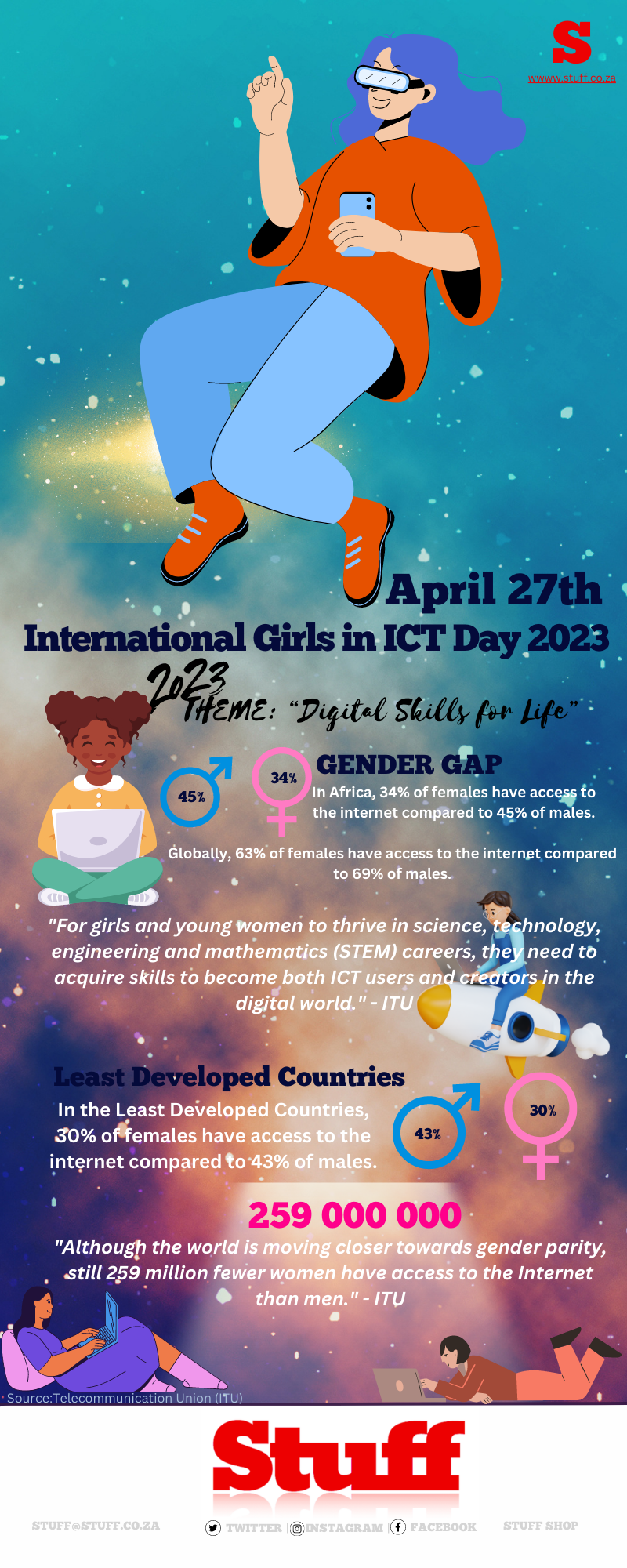Who runs the ICT world? Definitely not girls. The ICT gender divide remains wide and access to the internet remains low for most girls around the world.
As the world observed International Girls ICT Day on April 27, we’ll state the obvious and remind you of the divide that continues to place them at a disadvantage.
This year with its “Digital Skills for Life” theme the International Telecommunication Union (ITU) is calling for a boost in ICT skills development for girls.
The United Nations agency says there’s a need for more girls and women to become users and creators in the information and communications technology (ICT) industry.
“For girls and young women to thrive in science, technology, engineering, and mathematics (STEM) careers, they need to acquire skills to become both ICT users and creators in the digital world.”

However, according to a report by the ITU, people in the least developed countries remain at a disadvantage while women and girls face the biggest challenge.
“While the share of the population in LDCs using the internet has increased since 2011 from 4% to 36%, about two-thirds of the LDC population remains offline,” says the ITU.
Without internet access, the chances of acquiring ICT skills lessen. The ITU says that without these skills, the chances of using the internet are lessened for girls. Add the global ICT gender divide and girls become further removed from inclusion in the ICT industry.
Globally, 69% of males had access to the internet, compared to 63% of females. A more concerning picture emerged from Africa’s population. Only 34% of females on the continent have access to the internet compared to 45% of males in 2022.
“When measured in terms of Internet use, the digital gender gap in Least Developed Countries remains significant with no sign of narrowing,” says the ITU in a 2023 report.
According to their latest report, released in March 2023, 43% of the male population in LDCs was online in 2022. This is an increase from 28% in 2019.
“That is 13 percentage points more than the uptake among the female population (30%),” adds the ITU.
The lack of data from developing countries on the skills shortage also deepens the problem as agencies cannot properly determine the amount of effort necessary to develop skills in required areas.
Source: ITU




